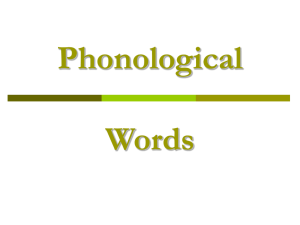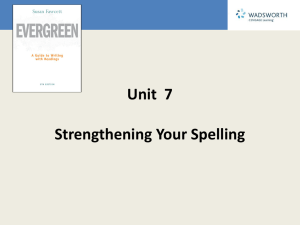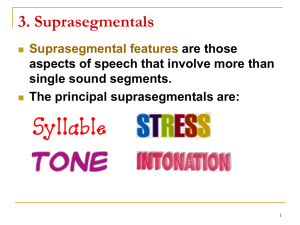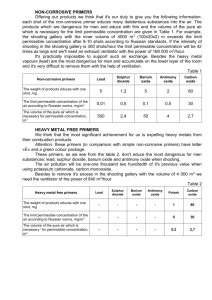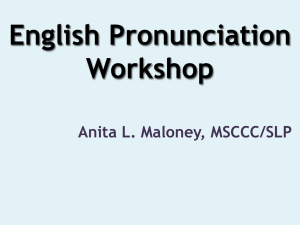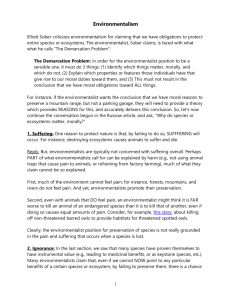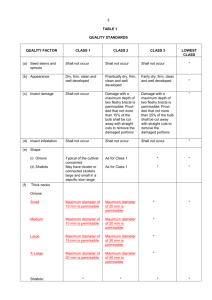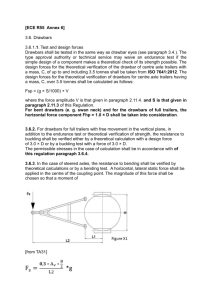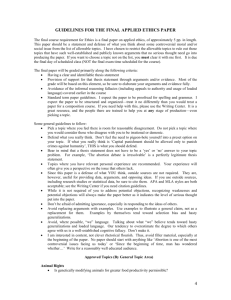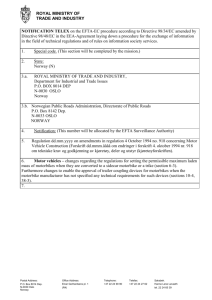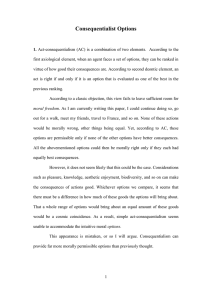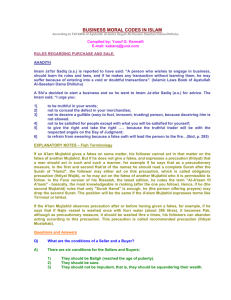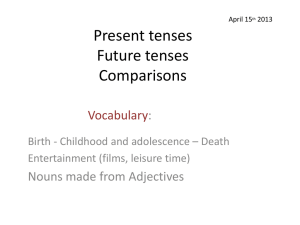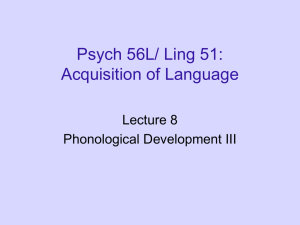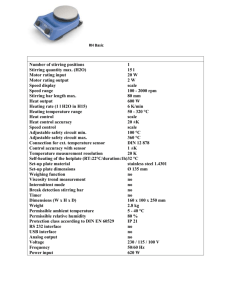Phonology I - Duke University
advertisement
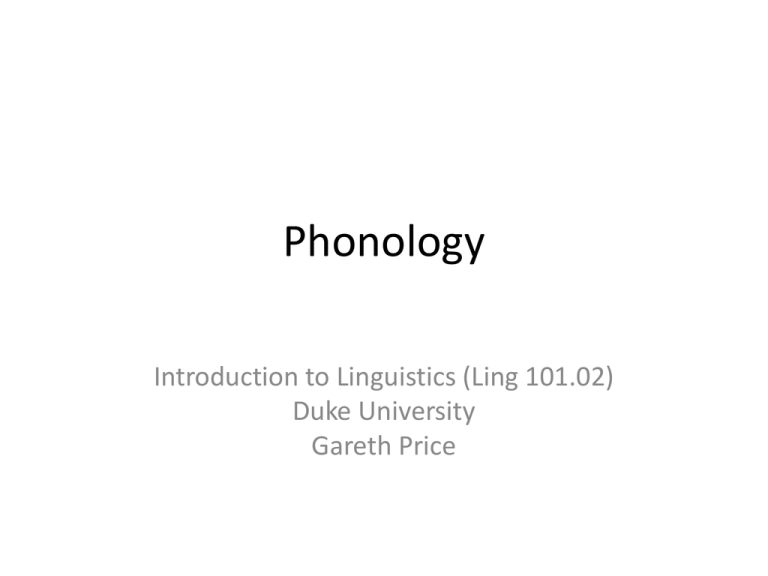
Phonology Introduction to Linguistics (Ling 101.02) Duke University Gareth Price Phonetics vs. Phonology SOUND • physical • objects and categories • meaning • Relations between objects and categories • Permissible sound • Acoustic properties • Biological bases of sounds patterns • Meaning-marking • Inter-changeability • Phones • Phonemes Which of the following could be classed as ‘words’ in English? • • • • • • • • • • • • • • ftrɒmp strɒmp ʃtrɒmp sɪftr sɪʃt strɪst sistr siʃtr knixt mistreit sɪʃtr wɪʃtreɪ wɪstrei wɪftrei • • • • • • • • • • • wiːʃtrei skel sbel Sdeb bisd fəsdəd mbeld beld mdelb melbd kzmet Phonotactics and Phonotactic Constraints • In any given language, some combinations are permissible, whereas others aren’t • So, in English: • fəsdəd /sd/= permissible consonant cluster • kzmet /kzm/ = not permissible • Ftrɒmp /ftr/ = not permissible Phonotactic Constraints • /sd/ – only permissible in word-medial position, not word-initial or word-final position • So: • /fəsdəd/ but not /sdeb/ or /bisd/ • /ʃtr/ ? • /wɪʃtreɪ/ but not /ʃtrɒmp/ or /sɪʃtr/ • (and, arguably, only permissible in compound words, eg. ash + tray = ashtray) Consonant Clusters in Other Languages • /ftr/ permissible in word-initial position in Russian • /ʃtr/ permissible in word-initial position in German • /kn/ permissible in German and Dutch. Not permissible in word initial position in Modern English ... But was in Old and Middle English hence /knixt/ ‘knight’ • Languages change over time • Speech changes faster than writing • Japanese, • Mandarin and Hawaiian don’t permit consonant clusters • So – consonants must be followed by a vowel Syllables • Other types of constraints: • Syllables consist of: Onset [consonant or consonant cluster] (optional) + Rime (obligatory) Nucleus [[usually]vowel mono/diphthong] (obligatory) Coda [consonant or consonant cluster] (optional) Some languages only have a vocalic (vowel) nucleus e.g. Mandarin: pjaʊ, mən, zhæŋ English has consonantal nuclei or syllabic consonants, but only generally with nasal or lateral liquid consonants [ŋ], [n], [m], [l] (so sədn or bred n bə? ə or kæʃ n kæri:) and are often identifiable by the lack of audible vocalic release in the preceding stop. Mandarin is limited in the possible consonants that are allowed as coda ([ŋ] or [n] or [w]). Languages can be classified then in terms of syllable structure, so: oʃi:moʃi: V CV CV CV kætækænæ CV CV CV CV Japanese does not permit coda and that all words must end with a CV syllable Walmatjari (Australian Aboriginal language): ngapa (‘water’)[ŋa pa] CV CV kurrupa (‘hand’) [ku ra pa] CV CV CV ngarpu (‘father’) [ŋar pu] CVC CV Syllable realised as either CV or CV, but all words must end with a CV syllable. Phonological Environment and Phonological Conditioning • One sound segment or two? • Chips, cheese, judge • In word initial position in English, we don’t perceive affricates as stop + fricative • However, consider: • He cheats vs. heat-sheets • What can each add? Vs. What can eat shad? • Lychee vs. light-ship • Ketchup vs. pet shop • Urchin vs hurt shin • Similarly, diphthongs can be tricky. • In English, we treat them as one sound segment and one syllable: • haʊ, baʊ, kaʊ • ɑɪ, hɑɪ, pɑɪ • heɪ, meɪ, leɪ, peɪ • However: in Komering (Southern Sumatra) • Mait (‘corpse’) tuot (‘knee’) and kuah (‘sauce’) • Perceived (and articulated) as two syllable words.

